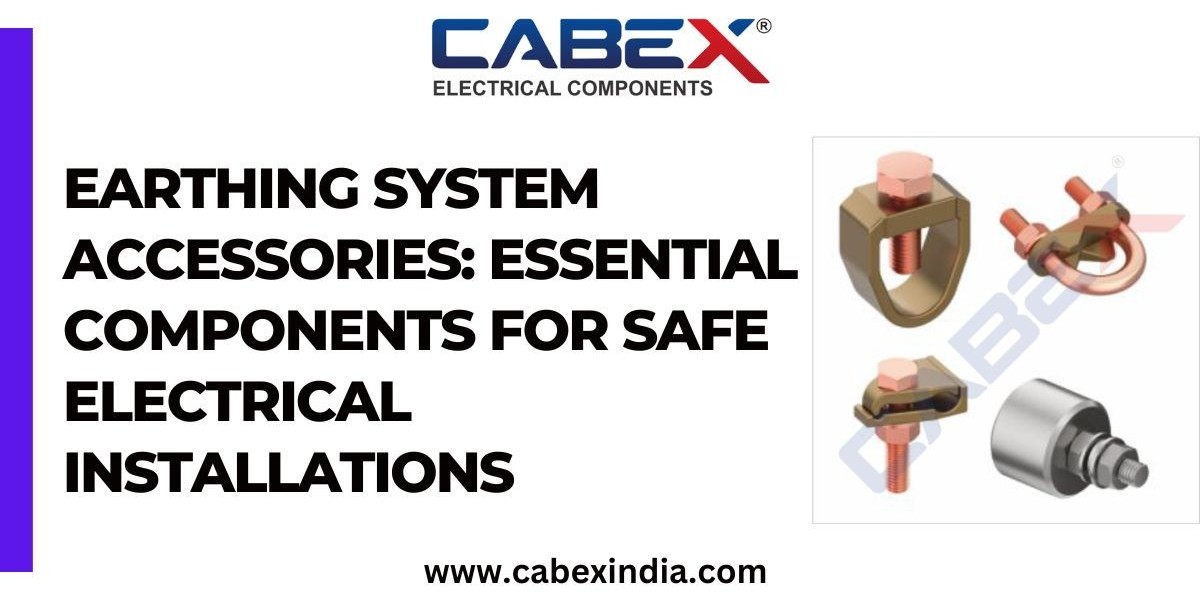Introduction
Earthing System Accessories play a vital role in electrical safety by preventing electric shocks, minimizing fire risks, and safeguarding equipment. This article explores the different earthing system accessories, their roles, and the importance of selecting the right accessories for a reliable and effective earthing setup.
What is an Earthing System?
An earthing system connects electrical installations to the ground, allowing fault currents to safely dissipate into the earth. This helps in protecting people, equipment, and structures from electrical hazards, grounding stray currents and stabilizing voltage levels.
Types of Earthing System Accessories
- Earthing Electrodes – The primary component in grounding systems, buried in the soil to disperse current.
- Ground Clamps – Connect conductors to grounding rods or pipes, ensuring a strong connection.
- Earth Bars and Busbars – Used in distribution panels for grounding multiple circuits at a central point.
- Lightning Arrestors – Protect structures from lightning strikes by redirecting the surge safely to the ground.
- Copper-Bonded Earthing Rods – Highly conductive and corrosion-resistant, ideal for long-term durability.
Functions of Earthing System Accessories
- Conductive Pathway: Provides a secure path for fault current to flow into the ground.
- Voltage Stabilization: Helps in maintaining a stable voltage level across electrical systems.
- Protection from Lightning: Redirects high-voltage surges caused by lightning strikes away from structures.
- Minimizes Electromagnetic Interference (EMI): Reduces the effects of EMI on sensitive equipment by providing a grounded shield.
Materials and Types of Earthing System Accessories
- Copper: High conductivity and corrosion resistance make copper a popular choice.
- Galvanized Steel: Cost-effective with decent corrosion resistance, suitable for most installations.
- Stainless Steel: Known for excellent durability and often used in high-corrosion environments.
- Graphite-Based Materials: Used in specialized applications requiring unique conductivity properties.
Key Benefits of Using Quality Earthing Accessories
- Enhanced Safety: Prevents electric shock and minimizes fire risks in case of a fault.
- Prolonged Equipment Life: Helps protect appliances and other equipment from power surges.
- Reduced Maintenance: Durable earthing accessories require less frequent maintenance, ensuring longevity.
- Regulatory Compliance: High-quality accessories help meet industry standards and regulations.
How to Choose the Right Earthing Accessories
- Soil Type and Condition: In highly corrosive soil, choose accessories with high corrosion resistance.
- System Requirements: Consider the electrical load and current carrying capacity when selecting accessories.
- Installation Environment: For areas with high humidity, copper or stainless steel accessories are recommended.
- Compliance Standards: Ensure that all accessories meet the necessary standards, such as IEC or IEEE, for effective performance.
FAQs
- What is the purpose of an earthing rod in an earthing system?
- The earthing rod is buried in the soil to dissipate fault currents into the ground, preventing electrical shocks and protecting equipment.
- Can I use stainless steel accessories in highly corrosive environments?
- Yes, stainless steel is highly resistant to corrosion and is suitable for such environments, though copper may still be preferred for better conductivity.
- How often should earthing systems be checked for maintenance?
- Generally, earthing systems should be inspected every 2-3 years to ensure components are in good condition and functioning correctly.
- What’s the difference between a ground clamp and an earthing rod?
- A ground clamp is used to secure grounding conductors to rods or pipes, while the earthing rod itself is driven into the ground to disperse electrical currents.
- Is it necessary to have a lightning arrestor in every earthing system?
- A lightning arrestor is essential for structures susceptible to lightning strikes, such as tall buildings, to safely redirect the surge.
Conclusion
Earthing system accessories are integral to creating safe and efficient electrical installations. From rods and clamps to earth bars and lightning arrestors, each accessory plays a role in protecting people and equipment from electrical hazards. Choosing high-quality accessories based on material, application, and compliance with safety standards will ensure that your earthing system is robust and reliable for years to come.








